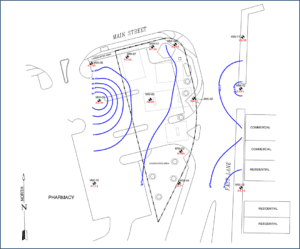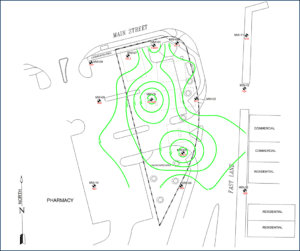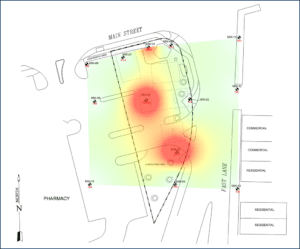 Environmental consultants spend a lot of time and resources generating groundwater monitoring reports for their clients. The consultants are under a lot of pressure to deliver quality reports that are on time and competitively priced. There are automation technologies that could automate the entire report generation process, but consultants have been reluctant to adopt them. If you are undecided about whether or not report automation technology is right for your team, a comparison of pros and cons of groundwater monitoring report automation–like the one below–can give you clarity to choose the right path for your business.
Environmental consultants spend a lot of time and resources generating groundwater monitoring reports for their clients. The consultants are under a lot of pressure to deliver quality reports that are on time and competitively priced. There are automation technologies that could automate the entire report generation process, but consultants have been reluctant to adopt them. If you are undecided about whether or not report automation technology is right for your team, a comparison of pros and cons of groundwater monitoring report automation–like the one below–can give you clarity to choose the right path for your business.
Con: The Expense
There’s no getting around the fact that software can be expensive. There are a wide variety of environmental software products that range in cost from tens of thousands of dollars for an initial installation to as little as $39 per month for a single project. Not every software product fits every application and you have to shop for the one that is right for your business. While it’s smart to shop around for a price that fits into your budget, don’t forget to weigh the overall value of the results you’re paying for.
Pro: The Quality
Software that automates data uploads to a database eliminates the opportunity for clerical and transcription errors. Does your staff spend time performing quality checks to ensure data tables are accurate? Do they spend time making sure data was plotted on maps correctly and that contours are in the correct location? How much could a missed error cost you?
Con: Flexibility
Manually completing reports certainly allows the most flexibility for format, style and presentation. If you have the budget to spend up to 10 times the time and effort over automation, go for it!
Pro: Increased Profit Margin
Automation can decrease the time it takes to generate reports by over 80%. If it takes less time to prepare a report, you will have lower labor costs. For fixed-price contracts, that is money in the bank for the consultant. Alternatively, it can be used as a competitive advantage for the consultant to reduce client costs and secure more work.
Con: Fewer Billable Hours
It is true. For time and materials contracts, you will have fewer billable hours in which to charge your clients. But think about it, those hours are clerical hours. Spend some of the extra professional time to focus on what is important: solving your client’s problems.
Pro: Consistency
By using the same software throughout your organization, you will have consistent looking reports. You will no longer have staff trying to put their own style on–or worse yet, omitting–key elements of a report.
Con: No Professional Interpretation
Geologists often say, “I like to draw my own contours on my maps because it allows me to use ‘professional judgment’ to choose where I place my contours. If software places the contours on a map, it may not accurately reflect site conditions.” It is true that groundwater flow in fractured bedrock is controlled by the fracture direction. It is also true that groundwater flow in unconsolidated sediments may be influenced by permeability differences. However, let’s face it, most of the time hand-placed contours are positioned because it is hoped that is the direction where groundwater is flowing or it is hoped that contamination stops right at the property line. When you are on the witness stand it is much better to refer to your report that had a map created with mathematically calculated contours and a well-thought-out explanation for your professional judgment as to why actual conditions were different.
Pro: Speed
Automated uploads to a database greatly reduces data entry time. If your mapping, statistical, and reporting applications are connected to the database, data is only entered once and can be consumed in real time whenever necessary. Multiple maps, comparisons, reports, etc. can be produced in minutes.
Con: Comfort
It’s true, change is uncomfortable. Employees resist change. Doing things a certain way because that is the way they have always been done is very comfortable. But fear of change may also be a limiting belief that is holding back adoption of modern technologies that can reduce errors and provide tremendous efficiencies.
Pro: Manage Your Data
Managing your data in a central  location provides a platform to share that data across multiple applications with multiple users. Your data is available anywhere at any time and is always backed up in the cloud.
location provides a platform to share that data across multiple applications with multiple users. Your data is available anywhere at any time and is always backed up in the cloud.
Con: Training
Some types of software require extensive training and almost require a full-time operator to be proficient. Other types of software are intuitive and can be picked up in as little as 30 minutes. Do your homework, check out how-to videos, and request a demo to see if the application meets your needs.
Pro: Reputation
In the environmental industry, you always need to be moving forward. If you don’t, you could become technologically obsolescent instead of an innovative industry leader. Picture this: While you are using the same old tried and true methods, your competition has already boosted productivity. Their staff is already a step ahead of yours. That’s bad for business. Keeping up to date with technology or being an early adopter can put your company in first place where it belongs.
Con: It’s Not Perfect
It’s true. Automation software is not perfect for every environmental reporting situation. Formatting may not quite fit client or regulatory specifications or report elements may be lacking certain features. However, part of the software technology may still be useful to meet some of your objectives. Check with your software supplier–they may already be working on those issues and may share a beta version that will work for you.
Reflecting on these pros and cons can better inform your decision on whether or not to use software to manage your data and automate your reports. Although using any software application has some drawbacks, the benefits that come with automation can bring your company results that make the choice well worth it.

If you would like to learn more about efficiencies other environmental companies are obtaining with data management and report automation software, check out OptaHub.com or read our other articles:
Five Mapping Features Not Found in Any Other Environmental Software
How to Prepare Groundwater Monitoring Reports
OptaHub Groundwater Monitoring Software Review: Jim Driscall

